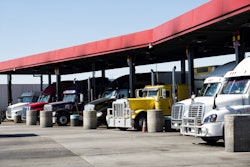It’s the right time to deploy artificial intelligence for your telematics systems, experts said during a panel at the McLeod Software User Conference held in Charlotte, North Carolina.
However, when it comes to actual deployment, Gary Johnson, head of safety and compliance strategy at Motive, said to make sure to understand the process. “Do your due diligence. What can it address as a goal, and your objectives for the technology? Look at what you’re looking to achieve here.”
Humans play a crucial role in AI systems, the experts agreed.
Despite AI’s autonomous capabilities, human involvement is essential. J.S. Bouchard, co-founder and chief product officer at ISAAC Instruments, pointed out that AI systems require vast amounts of data to learn, as the quality of data significantly impacts performance. That is where humans come in.
“If you don’t know the outcome, you don’t know what you’re trying to predict, you’re not going to get anything generated with AI," Bouchard explained. "To understand the outcome is something important, and that’s where the human comes into play: To understand what you’re trying to achieve, what you’re trying to predict, and what you’re trying to accomplish.”
People commonly misunderstand AI as a single technology, instead of a combination of multiple technologies like machine learning and natural language processing, Justin King, chief product officer at Transflo, pointed out. King explained, “AI isn’t a single solution that’s going to solve all these problems, it’s a combination of solutions that work together to create the outcomes that you want for your business or your consumer.”
Advancements in AI telematics
Looking back on the early days in the telematics industry, Adam Kahn, chief business development officer at Netradyne, said systems used to “track bits and bytes." Systems now can interpret datasets and contexts. “Having that added context to all data starts to make us have smarter conversations with our peers, drivers and customers," Kahn said.
Johnson stated an aspect worth watching is how AI is currently bringing a level of analytics beyond predictive behaviors. “This is a technology that can also identify through the camera technology if people are wearing the proper PPE, whether lifting techniques proper, if loads are secure, or if security levels have the right authorized personnel.”
Besides seeing real-time analytics to coach drivers, King added that advancements have allowed the company to see mass data analytics across the fleet. “[It’s] looking at the fleet as a whole and looking at a period of time that's much longer than in the moment, and looking at patterns and behaviors on particular drivers that could predict a safety event happening in the future.”
A common discourse on AI implementation is how it can replace jobs. However, Kahn pointed out that similar to previous technologies, it’s not a replacement for human power. “It’s an augmentation to human power that allows us to do more," he said.
The key to choosing the right vendors
While many players in the market may tout having the latest AI technology, Johnson advised carriers to perform due diligence when choosing providers. “Choose true partners that are going to grow with your business and needs. That is going to support your goals and values. Many out there will claim to have this ability.”
Find a provider who know how the handle the right data and can support the technology, Johnson added. “You want to start slow, then build over time. Nothing is worse than having this mountain of data that you don’t know what to do with because you got overwhelmed.”
Kahn pointed out some in the market may call a product AI-enabled as a marketing ploy. “It’s key to ask, ‘Why is this AI?’ Ask the difference between the old platform and the new platform. Ask them to walk you through why it’s AI. Get testimonials for heaven’s sake from peers.”
King added to ask vendors about the data. “Ask about the data and how is it determined. How is the software learning the behavior? Is it just going to be learning your driver’s behavior within your fleet, or is it leveraging the whole ecosystem of all carriers that are on that software?”
Security and privacy are also aspects to be aware about as a carrier, whether it can help the company. “Be aware if that data gets in the wrong hands or you get an alert and you fail to do something, [consider] whether it can create an issue for you down the road,” King stated.
Bouchard said it’s an investment that will cost money before it generates money. However, while some may be afraid of AI, Bouchard reminded that behind each AI system is a human that decided the outcome to look for, and that can be valuable to any fleet and its customers.












